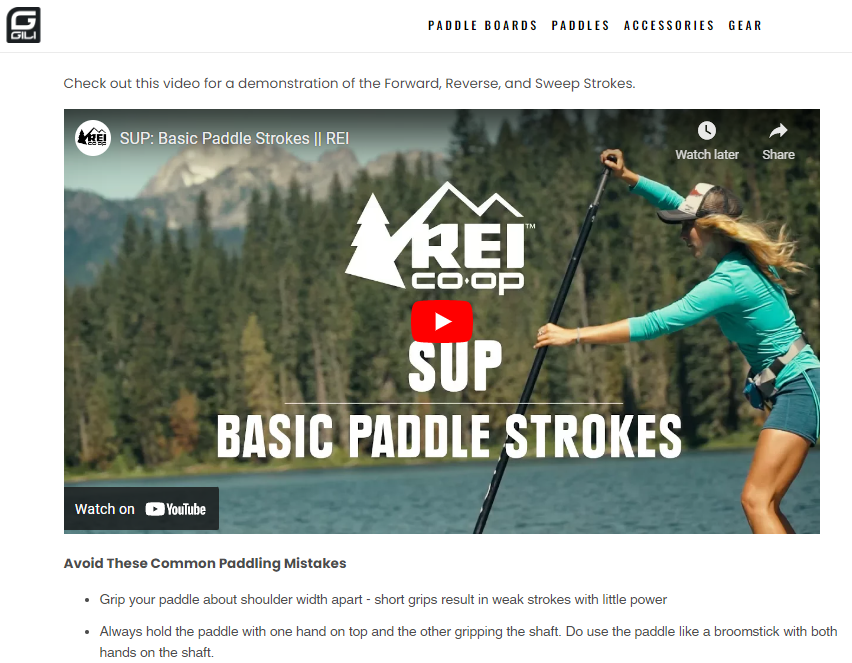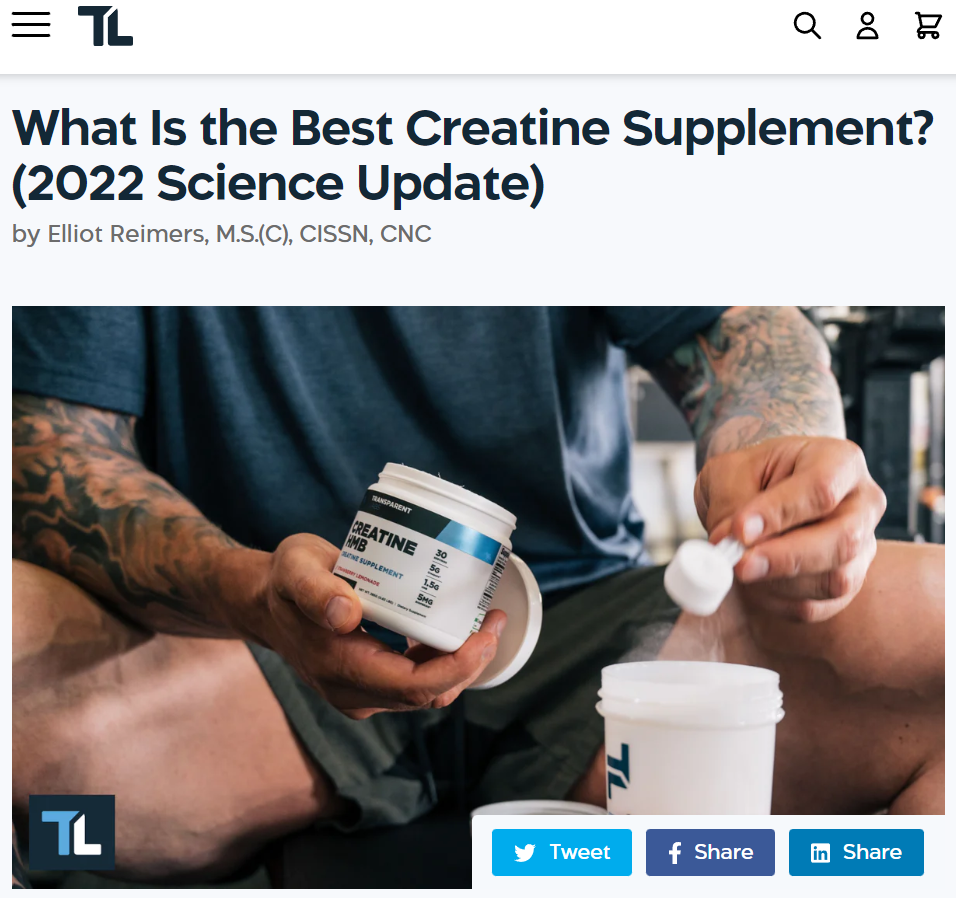There’s no debate about the significance of content in digital marketing – and its role is only getting bigger.
Research from The Content Marketing Institute (CMI) shows that 70% of B2C businesses and 78% of B2B businesses rely even more on content marketing strategies in the post-pandemic landscape, where building connections with consumers is increasingly important.
But for eCommerce businesses, content marketing entails another vital aspect: when your entire brand presence is online, your content is the only way to connect with your target audience.
You don’t have a physical store for a potential customer to walk into.
Still, you have all these digital destinations – like your online store, your blog, and your social media channels – to impress them, build a stable bond, and, ultimately, inspire conversions.
From boosting brand visibility to nurturing customer loyalty, an eCommerce business must utilize the power of different content marketing channels to reach its audience.
Now, most eCommerce sites use their blog to generate organic traffic.
This should remain your main content marketing objective, but you don’t have to stop there. You can achieve many secondary goals with your blog (like strengthening your brand image and building a bond with your customers), and many of them contribute to conversions.
So, to help you make the most out of your blog, here’s what you can do to create content that will help boost your conversion rate.
Choose Topics Strategically
One of the first steps of a content marketing strategy should be drafting a plan of which topics you want to focus on.
You can do this in many ways, but they all revolve around creating topics that speak to your audience’s known pain points.
Here’s the best way to do it, step by step:
1. Learn who your audience is
To understand who you’re reaching out to, you must first figure out how your typical customer thinks.
Do your research and learn the needs and desires of your target groups.
As you develop that knowledge, you’ll be able to start brainstorming topic ideas that align with their needs and preferences.
2. Brainstorm content topics with the entire marketing team
Have everyone chime in with ideas – especially the people who’ve had direct experience with your customers.
Specialists from the sales and customer service departments can have valuable knowledge about your buyers and might have valuable topic ideas that address specific pain points.
3. Address pain points
Through your research, you’ll find that your target consumers are seeking solutions to some specific pain points that you can address as a brand.
Your content topics tackling these issues will make your blog relevant and useful, which is just the right way to draw attention.
4. Ask yourself: Can your idea be translated into a blog post that is clear and relevant to your target buyers?
If your answer is no, you might want to hold on to that topic for a time when you’re out of ideas or simply toss it aside.
5. Take a look at what your competition does
You don’t need to copy their entire blog archive outright, but summarize what questions they answer and how they outline their topics.
Then, perfect your findings by developing more elaborate topics that answer questions that your competitors left unanswered.
Remember that the topics you choose need to allow your products to be mentioned in a subtle, natural way.
Showcase Your Product at Its Best
Your blog is an excellent place to generate FOMO and create an emotional connection between your audience and your product.
Beautiful, simple reviews for your site
Easily collect, show & grow customer reviews, photos & videos for your business.Use powerful visuals
To create some hype, you’ll want to rely on powerful visuals. If you’re publishing a post that lends itself to product images, there’s your chance.
Bring your best and make sure to utilize enticing, high-quality photos.
Keep in mind that many of your target customers will encounter your brand for the first time via a blog post, so it’s critical that you land these images for emotional impact.
You can show your product being used or, even better – show your customers enjoying the benefits your product brings.
Use short videos
Another optimal way of using visual content to boost conversions is short videos showcasing your product and educating buyers on how to use it.
A perfect example is GILI Sports’ The Ultimate Beginner’s Guide to Stand Up Paddle Boarding post featured on their blog.
This extensive guide about stand-up paddle boarding is populated with images, videos, and graphics that show the brand’s paddle boards in action.
It’s obvious that they’ve been professionally edited so that they demonstrate the product at its best.

Source: Gilisports.com
Introduce Your Product Naturally
An essential fact to remember about customers is that they mostly read blog posts to have a particular question answered.
They go to Google for answers to a query they need help with – some kind of pain point.
Thus, the results (blog posts) they stumble upon get a great chance to introduce their products while helping people with valuable information.
Typically, blogs exist to cater to top-of-the-funnel shoppers, and they’re entry points that familiarize your customers with your brand and product.
Provide helpful information
There’s always a way to ensure that your product gets a mention in your blog posts.
Just make absolutely sure that this is secondary to the main objective of the post – giving helpful information.
Shoppers appreciate this kind of “advertising” a lot more than encountering an awkward sales pitch.
Publishing a blog post that is obviously aimed at selling your product will harm the post’s credibility and the authority of your brand as well.
Here’s a well-rounded post by Branch, an office furniture retailer. Their 'How to Set Up Your Home Office for Maximum Productivity' article details how to lay out your office space to maximize efficiency.
Besides the educational nature, on a few occasions, you can notice how a couple of their products are naturally and subtly mentioned.
That creates a pleasant atmosphere for readers to get interested in the products and hopefully continue their shopping journey with the same brand.

Source: Branchfurniture.com
Align Your Product with a Verified Pain Point
We mentioned that when choosing blog topics, one best practice is addressing major customer pain points. Try to create blog posts that speak to specific paint points your product solves.
Research your audience’s pain points
First, you need to research and verify the pain points associated with your audience.
Don’t guess about the questions that your audience is asking when looking for a product like yours.
Understand all the ways that your product addresses a concern and develop blog posts that cover all of them.
It’s easier for customers to recognize the value of your product when you align their problems with the benefits you offer.
GetSafe, a medical alert system provider, incorporates this tactic in a great way.
In an article titled 6 Ways to Prepare Your Home for Your Aging Parent, they provide useful tips on the topic, and one of these tips promotes their product.
The blog post speaks about a very specific but valid pain point: children of elderly people don’t always know how to prepare their homes.
The marketing team knows this is a vital sales angle for them, so they address it with helpful content.

Source: Getsafe.com
Position Your Brand as a Subject Matter Expert
Some of your blog posts are going to have a strong conversion focus. After all, the point of your marketing efforts is to attract more leads and drive more sales.
This isn’t standard for content marketing, but that doesn’t mean you should avoid this approach entirely.
However, when you do publish a blog post that is obviously geared towards selling one of your products, make sure that it speaks with authority and that it’s highly credible.
It becomes a lot easier to effortlessly promote products by becoming a trusted voice in your field.
Ensuring you’re seen as an expert on an important subject in your industry goes towards building the level of brand loyalty that major enterprises fight for.
How to appear to be a subject matter expert
You can achieve this by:
- Going into detail in your posts
- Making sure that your content writers are highly qualified
- Giving tons of valuable information that helps the customer make an informed decision
- Linking out to valuable external and internal resources, etc.
Transparent Labs, a sports supplement company, backs up the claims that they’re the best in their field by posting articles that are written by highly qualified authors.
What Is the Best Creatine Supplement? is written by a professional holding a prestigious certification in the field of sports nutrition and supplementation (CISSN).
The article states scientific sources and unbiased information that supports the use of one of their products, which is featured at the end of the post.

Source: Transparentlabs.com
Embrace High-Quality User-Generated Content
There are dozens of ways you can utilize user-generated content to leverage social proof and increase your eCommerce site’s conversion rates.
One of those ways is to include case studies or customer stories in your blog posts.
It can be as simple as creating a post that basically makes a particular customer the hero of the story.
This type of blog post doesn’t even need to feature content that mentions your product.
Even just listing the benefits of using your product is a good enough reason to publish and make your customers relate.
As long as the content is related to your brand and the story was written specifically for your blog, you’re good to go.
When it comes to this practice, Patagonia is a great example.
The outdoor clothing and gear brand have an entire section dedicated to customer stories and activism efforts.
This elevates the brand in a way that shows they’re not only doing this for profit but that they really care for the people they do business with.

Source: Patagonia.com
Urban Armor Gear employs a similar tactic while putting more focus on its products.
The brand features Professionals Using UAG Products in their everyday lives and while working. They ensure that this speaks to the customers and assures them that they can rely on the products’ quality.

Source: Urbanarmorgear.com
Be Bold with Your Calls to Action
In the fashion of “Fortune favors the bold,” sometimes it pays to be a little more daring when promoting your product on a blog post.
Most of the time, people read blogs because they want to be informed and not sold to.
Nonetheless, they won’t mind an eye-catching CTA as long as your content offers exceptional value.
Make note not to overuse this tactic, however.
Only consider it by simply placing a tasteful, clear, strong sales-forward CTA in the vicinity of your content.
This would work exceptionally well if your content mentions your product in a natural, logical, non-intrusive way.
Always include a CTA
The last thing you want is for your content to entice readers to buy from you but then not have a CTA handy.
That way, you run the risk of sending them off on a mission to find the products in question and lose their interest when they can’t find them. Give them the opportunity to make an impulse purchase.
We can use SomniFix to demonstrate how this is properly done.
They published an article about the Benefits of Being an Early Riser .
With great tips throughout the entire post, SomniFix makes a case for using a mouth strip for better sleep (their product!) at the end of the post, along with a very clear CTA.
Thus, they allow their customers to immediately jump to the purchase section and buy the product hassle-free.

Source: Somnifix.com
Publish Deep-Dive Product Comparisons
Content marketing is a great way to help your customers decide which product to buy.
This is highly possible with posts that enable product comparisons.
While most blog post types usually form the beginning stage of the sales funnel, product comparison posts cater to shoppers in the decision stage of the buyer’s journey.
That’s the stage when customers are already interested in buying but need more guidance on which product best fits their needs.
Give the customer everything they need to make a decision
If you publish this type of content, ensure you don’t go through the motions and only do the minimum.
Make a genuine effort and give your prospects content that’s really valuable to them.
Dive deep into the strongest assets of your products and give your customers the impression that the blog post they’re reading is the last thing they need to read on the topic.
They must not be tempted to go elsewhere for more detailed info.
Here’s Firepit Surplus with a great example.
Their shopping guide detailing the 10 Best Concrete Fire Pits of 2022 is exactly the kind of in-depth product roundup we’re talking about.

Source: Firepitsurplus.com
Promote Your Successful Blog Posts
You’ll notice that some of your blog posts result in more traffic and sales than others. When this happens, you can leverage the power of social media and use it to promote your most successful posts actively.
By doing this, you ensure that you’ll always be able to show to a bigger audience something that’s proven to work.
Simply share your posts on your social media channels or utilize paid campaigns to sponsor your content.
Social networks are also a great way to build your brand image, engage customers, and encourage them to share your content within their social media circles.
Whatever your choice, be prepared to generate more interest and reach more prospective customers.
Stay proactive and ensure you’re not out of stock if you hit that marketing jackpot.
Final Thoughts
Content is an excellent way to enhance the customer journey and the customer’s overall experience on your eCommerce website—quality content results in increased visibility and measurable conversions.
Regularly learning the latest best practices, testing, and improving your content goes a long way toward aligning with your conversion optimization efforts.
Tracking your published content's performance is key in determining what works best for your target audience.
With that in mind, your content marketing strategy can be a complex undertaking that requires an entire team of professionals to master.
But considering the competitiveness of the eCommerce landscape, it’s not an option and it’s what your audience ultimately expects from your brand, and all the effort will be more than worth it.









